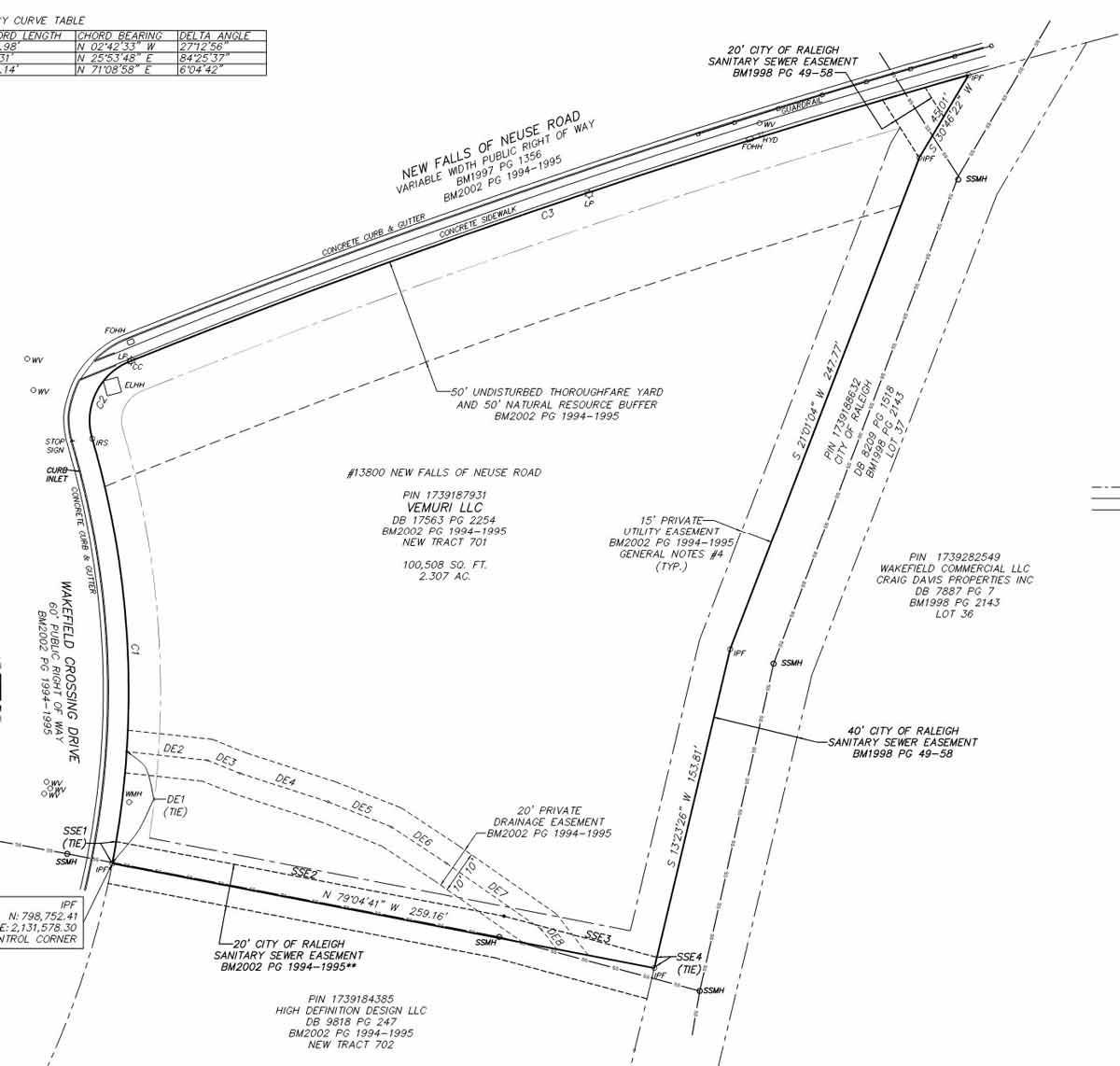
How to Vet a Potential Real Estate Development Project
So, you’re scouting a potential site for a development project, and you think you’ve found the perfect location. You may be eager to get the ball rolling and put in an offer, but first, it’s time to dive deeper into the details to see if the property is indeed a good fit for the project you envision.
Real estate development projects are significant time and financial commitments. Before closing on a site, you should complete all the necessary due diligence to ensure you’re making a sound financial decision with confidence the land you purchase will support your development vision.
In this article, we’ll walk you through how we would vet a potential real estate development project. At Robertson Architecture, we bring our extensive expertise and understanding of the intricacies of the development process to the table. We work as a team with our clients to ensure that each step is as seamless as possible from start to finish. We also guide our clients, so they understand the best use for the piece of land they are considering for their development property.
Pre-Development Stage
The steps before breaking ground fall under the umbrella of the pre-development phase of the development process. In the pre-development phase, you research all the necessary information before closing the deal on the lot or moving forward with construction. These steps go hand-in-hand with the architectural design process because you need to understand the financials, zoning laws, and building codes to ensure the development’s design intent aligns with the site’s possibilities.
This is one of the many reasons why our team at Robertson Architecture is often part of the site selection process for new development projects. We share valuable insight with our clients about what is possible for a piece of land based on local legislation and architectural best practices.
The goal of the pre-development stage is to complete a real estate development feasibility study on the potential site and design plan. This study includes market analysis, competition analysis, land use evaluation, site analysis, financial feasibility, risk assessment, and due diligence. Below, we’ll walk through each of these facets in more detail.
Market Analysis
The feasibility study starts with a comprehensive market analysis of the site’s location. This analysis includes researching vacancy and lease/own rates by property type and understanding the current housing market landscape, household sizes, and demographics such as age, gender, education levels, and household income. This information, which can be researched via Census data and other online software, is crucial for making informed decisions about your potential development project. Other local details to consider are access to workplaces, highways, and public transportation.
Analyze the Competition
The next phase of the development feasibility study is to review the local competition in the market. For instance, if you’re planning to build a residential complex, look at the occupancy rates and rental prices of similar properties in the area. Are there other nearby developments with similar specs to your project? If so, what is their lease rate? Vacancy rate? If properties are for sale, how quickly are similar properties on the market selling? These are questions you should find answers to when vetting a potential development project.
Whether you plan to list the property for lease or sale, you also want to know that your development will fill a gap in the local housing market or be a step up from the surrounding properties that are marketed at the same price.
Evaluating Land Use
During the feasibility study, you must evaluate if the land you are interested in purchasing will suit your project. You want to confirm that the zoning laws and environmental analysis support the structure you want to build. For example, if you are looking to build a community of townhomes, you want to be sure that the lot is zoned to allow this kind of development on the site.
At this point, a site survey may or may not be available. If it isn’t, we can use the information provided by the city or county’s GIS to do a preliminary test fit in order to see if the deal will work. The GIS test fit is a high-level analysis at this stage. In order to have a better understanding of the site, a land survey will be needed.
Having an architect and civil engineer on your team is particularly helpful in the pre-development stage. Architects, with their deep understanding of local zoning laws and building codes, play a crucial role in guiding you on the feasibility of your project. Civil engineers will help test the validity of the site to support the desired program. Once we understand our client’s needs for their development, we can assess the site’s ability to make their vision work in tandem with the desired location.
Site Analysis
Site analysis and site planning are another essential part of the feasibility study for a potential development project. The site’s topography is a crucial element to evaluate, as the location’s terrain will affect how much you will have to invest in clearing the property. You also have to make sure the lot can support the property you want to build. Other environmental factors to consider are if the lot is in a flood plain or near any fault lines, which is part of your due diligence efforts before purchasing so you know your property isn’t at high risk for the effects of natural disasters.
In the site analysis step, the architect will create hand sketches of the site so the client can see where the different programmatic elements would be situated on the lot. As mentioned above, the local zoning and building codes need to be understood during this analysis, which your architect will assist you with. Site analysis is where the pre-development and architectural design processes begin to work together.
Financial Feasibility
The next part of the feasibility study is financial feasibility, arguably the most vital piece to understand when vetting a potential real estate development project. A real estate development’s financial and cash flow analysis includes land development costs, construction costs, revenue estimates, and expense estimates. At this point, consider your financing for the project and decide the smartest way to access the necessary capital.
Use the Feasibility Study to Evaluate Risk
You will use the feasibility study results to evaluate the risk-return of the investment during the early stages of the pre-development process. This is where you can verify that both sides of the equation, the financials and the way the design and lot work together, will be a solid investment for your portfolio and effectively achieve your real estate goals. It’s important to note that every investment carries some risk, but by conducting a thorough feasibility study, you can identify and mitigate these risks to the best of your ability.
Due Diligence is Essential
The feasibility study is part of a more extensive due diligence effort that should be completed before closing the deal. The due diligence process also includes:
- Reviewing environmental, energy, and property condition reports
- Completing surveys
- Obtaining the current title policy and recent property tax and utility bills
- Reviewing any government-issued documentation
This step is also when your architect can start drawing up construction documents if you plan to proceed with development.
Consider These Elements When Vetting a Potential Real Estate Development Project
These are all important factors to consider when vetting a potential real estate development project. You want to be sure that the development makes sense financially and is aligned with local zoning laws and building codes. That’s why due diligence in the pre-development phase is so crucial.
When you have all the facts going into the development process, you can stave off problems down the road. This is where having an experienced team on your side is key to a successful project. As architects, we’ve seen it all and are ready and eager to guide our clients to make smart and sound decisions during each step of the development process.
Reach out today to learn more about how our team at Robertson Architecture can help you vet a new development project!
Author: David Robertson is an Atlanta based architect and founder of Robertson Architecture. Robertson Architecture on the premise of helping entrepreneurs and like-minded individuals exceed their goals.
In 2018, Robertson Architecture was formed with the single focus of helping homeowners and entrepreneurs exceed their goals. The firm works with custom residential homes, townhouses, restaurants, and hotels all across the Southeast. David has a passion for helping entrepreneurs and homeowners realize their dreams.
With over 10 years of experience, David spent the beginning part of his career working on small to medium sized commercial projects across the U.S., including hospitality projects, office buildings, multi-family, and custom homes.
- David Robertson AIA NCARB
- Office 470.795.9596
- info@robertsonarc.com


0 comments